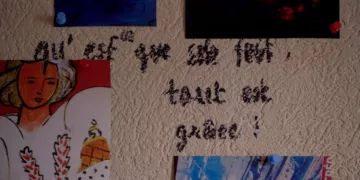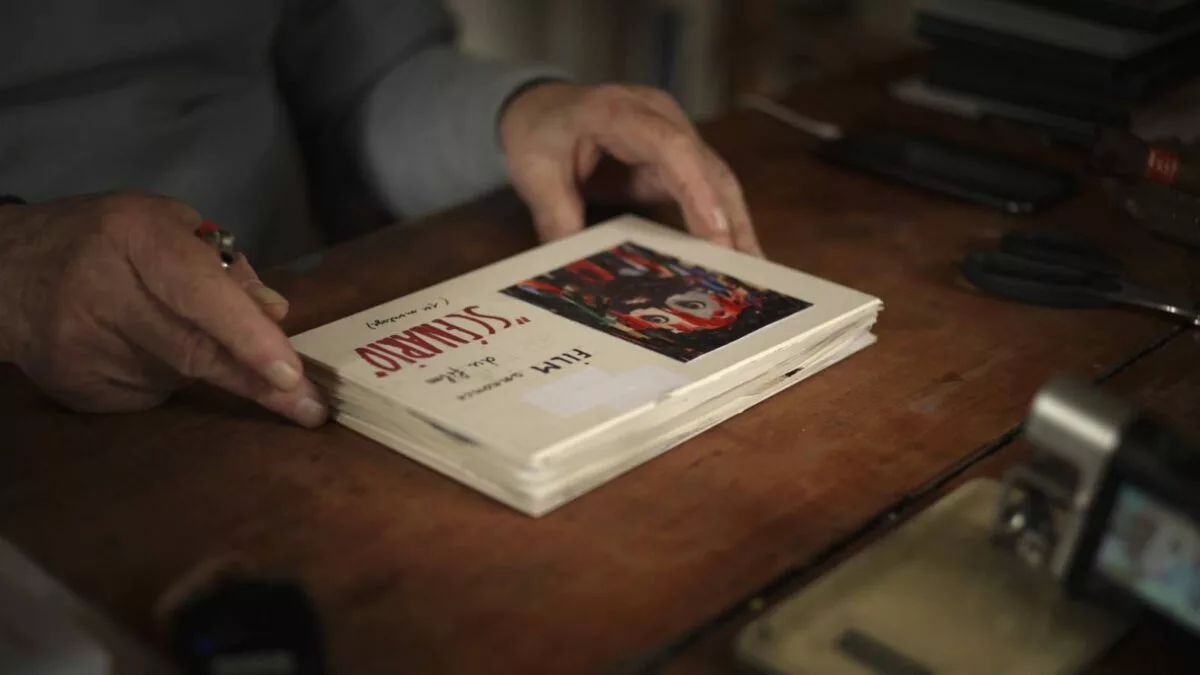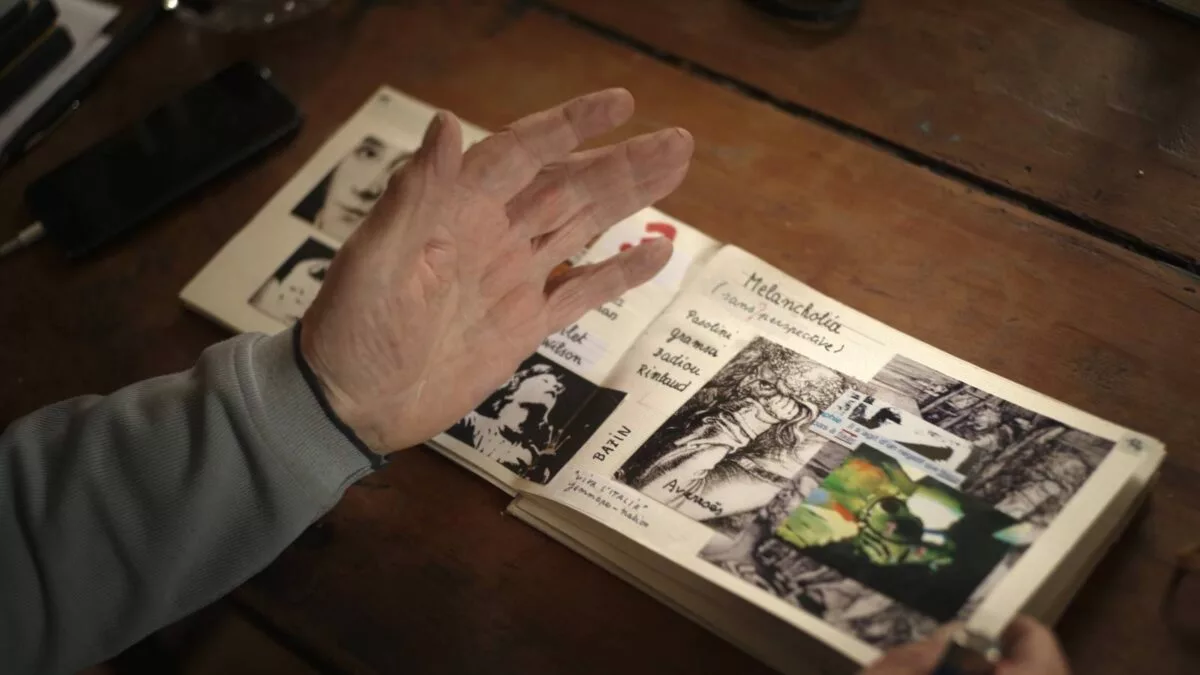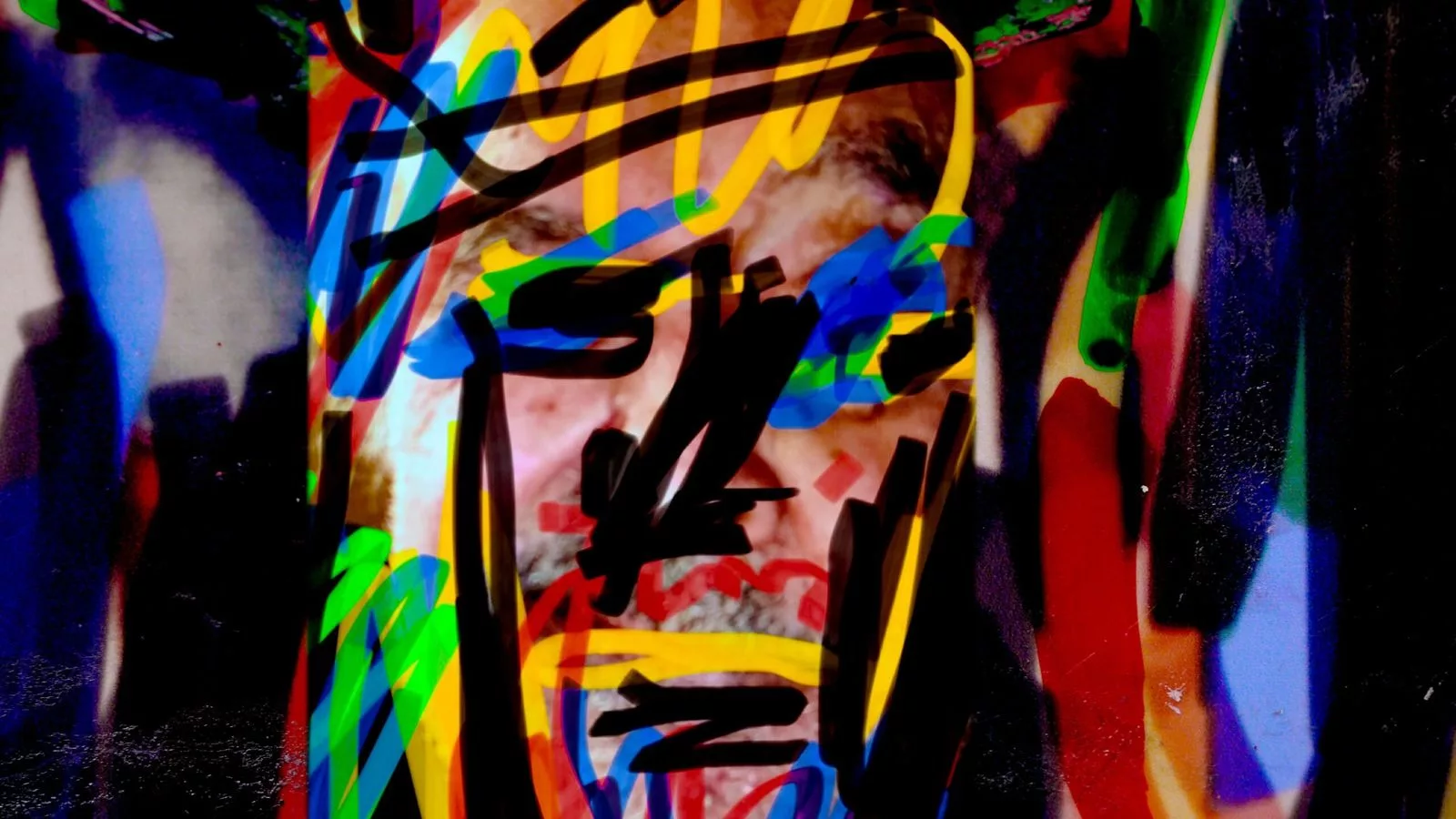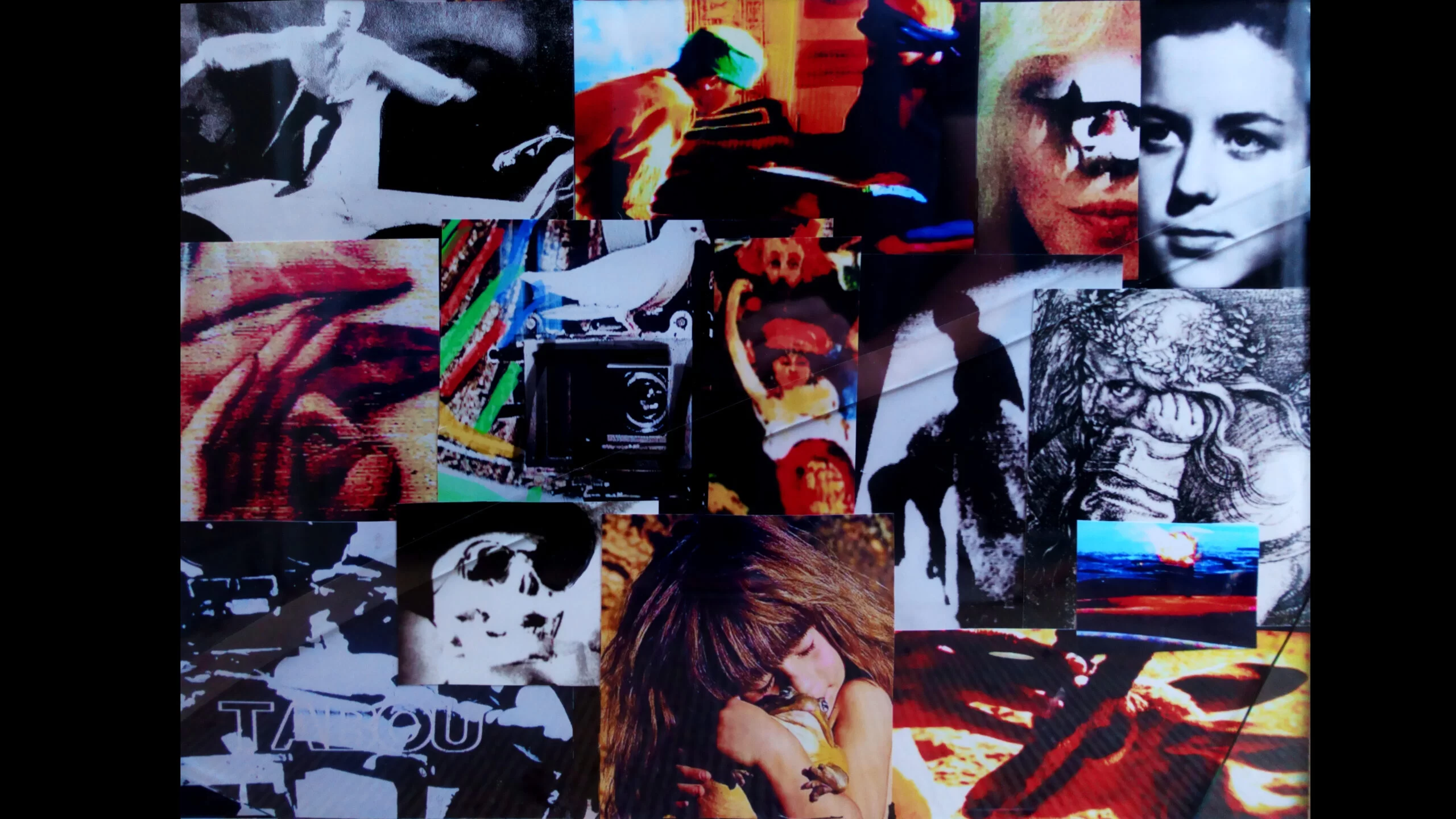Jean-Luc Godard was one of cinema’s greatest pioneers. Across a storied career spanning six decades, he continually pushed artistic boundaries with his fresh, thought-provoking films. Even in his nineties, Godard remained a restless innovator, as shown by his 2018 work, The Image Book. His final completed movie, Scénarios, acts as a revelatory capstone.
Although only 18 minutes long, Scénarios packs a punch. A visual collage in Godard’s signature style, it layers evocative imagery over haunting sounds. Fragments of iconic films from across decades blend with Godard’s own sketches and symbols. Through this dense mixture, major themes emerge. Two particularly stand out: Godard’s confronting of mortality and his warning against the horrors of war.
Godard worked tirelessly on Scénarios until the very end. Just one day before assisted death in 2018, he declared the film complete. Released later at Cannes, it seems designed as his farewell message. Watching Scénarios now, we witness Godard’s parting thoughts in his final moments of genius. Through its enigmatic images and sounds, the film offers a uniquely Godardian way of examining life’s deepest questions. Even in these closing reflections, Godard remains committed to provoking audiences and keeping us on our toes.
Visualizing Godard’s Final Thoughts
Scénarios wastes no time plunging the viewer into its collage of stirring imagery. We open with grainy footage of soldiers in combat and the words “Final Warning.” Godard then takes us on a journey through scenes of violence and history. Snippets from his earlier films mingle with sketches and photo stills, spinning a dense web of ideas.
Amidst this chaos of pictures, two themes gradually emerge with haunting clarity. First is Godard’s own reflection on mortality. He confronts the reality of death head-on through iconic shots of bodies and spilled blood. At the same time, Godard issues a warning about the terrors of warfare. Images from ancient battles and modern conflicts drill into the message that war remains our greatest threat.
In one of the film’s most powerful moments, Godard himself appears aged but intent. He proceeds to methodically guide us through sketches for the movie laid out before him. Godard peppers his narration with references to cinema’s pioneers, cementing his place among them. All the while, sounds and symbolic touches enrich the visual tapestry.
Right until the very end, when Godard peers directly at the camera with a cryptic “Okay,” he crafts a thought-provoking work. Scénarios might lack a traditional narrative, but as a final testament, it couldn’t be more effective at sharing Godard’s perspective in his own inimitable style.
Godard’s Powerful Themes
Scénarios tackles some truly profound subjects that defined Godard’s legendary body of work. Two themes stand out most prominently amid the film’s provocative collage of imagery.
The first is death and mortality. With his time drawing near, Godard faced his inevitable end with unflinching courage. Images of corpses and spilled blood force the viewer to stare down at their own demise. By intertwining clips from classic noirs, Godard seemingly asks what it means to leave behind a legacy in an uncertain world.
But perhaps an even greater focus is on the untold horrors of war. From its ominous opening lines to distressing scenes of combat, Scénarios delivers a sobering anti-war message. Godard presents battle and conflict as humanity’s recurring tragedies across the generations. A snapshot of a drowned soldier burning itself in memory drives home the stark human cost.
As with all of Godard’s art, Scénarios also explores cinema and how it shapes our understanding of reality. Scattered films still pay tribute to the directors who influenced him while deconstructing established works. With snippets from his own career, Godard demonstrates his lifelong passion for pushing creative boundaries.
Ultimately, the film reflects Godard’s view that superficial appearances disguise deeper complexities. Political systems, technology—even a simple horse—carry multiple meanings under his inquiry. Through its dense montage of visual metaphors and references, Scénarios spotlights Godard’s quest to challenge assumptions until the very end. His thought-provoking final statement left no concept untreated.
Godard’s Signature Visual Style
Scénarios showed Godard’s artistic style was as bold and boundless as ever. The film plays out like one of his classic collage experiments through nonlinear editing and layered imagery. Shots blend seamlessly in a mad rush, forcing focus on thematic connections instead of literal progression.
Music, sight, and text surge at the viewer in an immersive sensory onslaught. Godard throws viewers into his vivid dreamworld without any hand-holding. Images spark ideas through fleeting glimpses, leaving puzzles to decode. At times, the film offers enigmatic sketches that we can only guess the meaning of.
As with his other late works, Godard crafted Scénarios entirely from preexisting footage. Film snippets and stills from his storied career combine with a diverse range of archive material. Icons of cinematic history sit side by side with eerie wartime photographs in jarring juxtaposition. These colliding worlds challenge presumptions and stir the subconscious in signature Godard fashion.
Symbolism runs thick, whether soldiers drowning beneath gray skies or flickers from “Ivan the Terrible” foreshadowing greater turmoil. Even casual lines take on complex, layered interpretations. Through such economical techniques, Godard packs scenarios with profound undercurrents in a brief span.
The film serves as the final mark of an unparalleled visionary who pushed boundaries for six decades. In Scénarios, Godard leaves us with an expression of his dynamic, disruptive style—a defining work to conclude his boundary-smashing career on his own audacious terms until the very conclusion.
An Intimate Look at Godard’s Process
The Cannes screening of Scénarios included a rare treat: a documentary covering Godard’s actual creation of the film. “The Film Preview of ‘Scénarios'” pulls back the curtain on his artistry like never before.
Across 34 mesmerizing minutes, Godard guides viewers through his storyboard scrapbook, page by page. Fans gain newfound respect seeing ideas sprout and connect through his hand-drawn sketches. Each addition stems from logic yet stimulates novel contemplation.
What stands out is Godard’s preternatural focus despite his 92 years. No detail proves too minor in shaping his dynamic collage approach. We witness an organized flow yet bountiful flexibility as motifs evolve. Godard shares in a passionate yet relaxed fashion, warming viewers into his journey.
Centered in each frame is Godard’s steady presence, enhancing scenes with lively description. But he never acts alone; his close collaborator Fabrice Aragno plays an instrumental role in developing Godard’s vision on screen. Their bond stems from decades of working in tandem in pursuit of provocative filmmaking.
This unique invitation to Godard’s process lets us glimpse how a master’s mind works to imbue every project with purpose and poignancy. It grants newfound appreciation that even in his last reflections, Godard’s restless creativity stayed vibrant as ever.
Leaving Godard’s Final Message
That closing scene in Scénarios stays striking—Godard reading Sartre rather than cutting to his eyes and meeting the lens with a resolute “Okay.” Viewers wonder about his thinking in that moment. Was he affirming his peace by passing? Are we all preparing for his departure?
That Sartre passage suggests Godard saw meaning as multilayered, not solely as presented. A “horse” holds countless interpretations, depending on who’s looking. His career proved the same for any subject, constantly challenging assumptions through radical form.
When Godard gazes into the camera before “Okay,” it feels like he knows he left one final puzzle. Some see a loving gift for devotees to unravel. His piercing stare could affirm our shared humanity or invite new reflections on a life’s work. Either way, it captures Godard in his element—provoking thought even in the subtlest gesture.
Considering how Scénarios emerged from Godard’s sketchbook, it reads aptly as his ultimate creative statement. Crafted at life’s end, it fittingly ponders life, death, art’s purpose, and meaning’s elusive nature. With Scénarios, Godard departs as he always has—questioning, challenging, and inspiring all who experience his singular cinematic language.
The Resounding Echo of Scénarios
With Scénarios emerging so near life’s conclusion, it gains stature as Godard’s possible cinematic valedictory. Crafted by a legend at life’s sunset, it holds poignancy when reviewing his influences and obsessions in twilight.
War and mortality loom large, as one might expect from an aging artist pondering his place. But Godard’s musings are not mere sunset reflections; they probe the nature of image and meaning with vigor, showing his intellect remained as inquisitive as a career’s dawn.
His parting message seems to urge keeping eyes open to cinema’s and the world’s complexities, even when assuming most are known. Scénarios reminds us that even icons’ final works can offer insight beyond what came before, as Godard again challenges through radical form and stimulating thought.
Nearly three years after his passing, Godard’s indelible imprint remains across global film. Though innovations pushed norms to their limits, his spirit of political engagement and willful experimentation continue to spur new artists. Scénarios proves true to influences yet uniquely Godard, a fitting capstone to a career unlike any other.
Final Thoughts on Godard’s Cinematic Swan Song
With Scénarios emerging so near life’s conclusion, it takes on added resonance as a work crafted by a legend at sunset. Pondering war, mortality, and the image’s very nature, Godard’s parting message stirs reflection, as one might hope from such an innovator’s cinematic valediction.
This brief yet captivating film serves as a fitting bookend to its maker’s boundary-pushing career. Even in his late years, Godard challenged viewers while embodying the engaged spirit that galvanized cinema. Though radical techniques disquieted some, he felt films duty was provoking thought, and in Scénarios, he succeeds masterfully.
While death approaches, Godard left one last reminder that even icons continually question and experiment. Scénarios richly rewarded close viewing, as Godard rewarded devotees through decades and likely will continue inspiring new artists to follow his footsteps restlessly. For movie enthusiasts, it presents a poignant parting gift from a director who reshaped cinema and remained committed to sharing thought-provoking visions until life’s final moments.
The Review
Scénarios
In conclusion, Scénarios stands as a profound artistic statement—a cinematic rumination on life, art, and the sublime mysteries that even icons cannot unravel. Crafted by an innovator reflecting on decades shaping cinema, it rewards repeat viewing and will undoubtedly spur discussion for years to come.
PROS
- Powerfully moving and thought-provoking final artwork from a cinematic legend
- Dense with symbolism yet inviting multiple interpretations that spur discussion
- Expertly crafted collage of images that reward repeat viewings
- Offers insight into Godard's artistic process and commentary on weighty themes.
CONS
- Oblique and abstract nature may frustrate those seeking a straight narrative.
- Brief at only 18 minutes, leaving viewers wanting more.
- Godard's unconventional techniques are not for those seeking mainstream fare.
